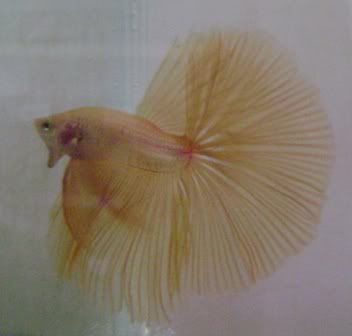

The Betta fish (Betta splendens), commonly called a "siamese fighting fish", is one of the most popular species of freshwater aquarium fish. It is native to the Mekong river basin in Southeast Asia and called pla-kad or pla-kat ("Biting Fish") in its native Thailand.
The name Betta (or betta) is pronounced /ˈbɛtə/.[1] That is, the first part is the same as the English word bet. By confusion with the name of the Greek letter beta, the name is often pronounced /ˈbeɪtə/ in American English, and may be misspelled with one t. The name of the genus is unrelated to that of the Greek letter, being derived from ikan bettah, in a local language in Thailand.[2]
B. splendens usually grow to an overall length of about 6.0 cm (~ 2.3 in), though some varieties reach 8.0 cm (3.5 in.) in length. In recent years breeders have been able to create "Giant Bettas" that exceed 8.0 cm (3.5 in.) due to the manipulation of a mutant gene. Although bettas are known for their brilliant colors and large, flowing fins, the natural coloration of B. splendens is a dull green and brown, and the fins of wild specimens are relatively short. However, brilliantly colored and longer finned varieties, such as veiltail, delta, superdelta, and halfmoon have been developed through selective breeding.
The betta is a member of the Gourami family (family Osphronemidae) of order Perciformes, but was formerly classified among the Anabantidae. Although there are nearly 50 other types of bettas, B. splendens is the most popular species among aquarium hobbyists, particularly in the United States.




 Breeders have developed several different tail shapes:
Breeders have developed several different tail shapes: 








